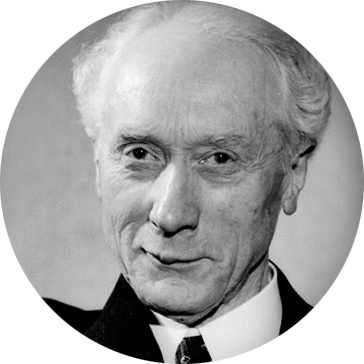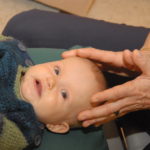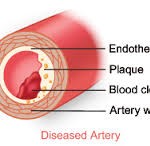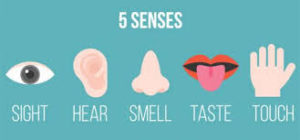The Alexander Technique
A method of learning how to change long held habitual patterns in the body
Written by Dr. Cynthia Horner

The Alexander Technique has been around since the early 1900’s. It was developed by Fredrick Alexander and Australian actor and reciter.
He began to have problems with his voice that effected his performances. After visiting many doctors his condition continued to get worse. He observed that the way his head was balanced on his spine, and the relationship between his head, neck and spine had a profound effect on the efficient functioning of his body as a whole.
Postpartum Blues Be Gone
This gallery contains 3 photos.
Written by Dr. Cynthia Horner
I hope you are open to learning new things. For most people the idea of using the hormones and nutrients from the placenta to help mother and baby after the birth may be new or even sound strange. But it is not new or strange, just smart.

Cranialsacral Therapy
Written by Dr Cynthia Horner
It is becoming more obvious that the cause of many health problems, is subtle tension in the membranes of the brain and spinal cord. Cranialsacral therapy addresses these membranes in infants, children and adults.
Patients have reported headaches, low back pain, digestive issues, sinus and ear infections resolved through cranialsacral therapy.
Continue reading
Posture, a New Look at an Old Word
Written by Dr. Cynthia Horner
A new look at creating posture
The ancient Japanese art form of growing Bonsai trees is a fascinating example of creating posture. Bonsai trees are normal shrubs that have been consistently stressed in a particular way for a long time to create a ‘posture’ which would never be found in nature. Depending on how the tree is stressed while it grows, determines how it will grow. 
Our spines are no different; our posture is an expression of the stress we put on our bodies, sometimes creating posture that also would never normally be found in nature. Bones change shape to accommodate to stress. The body lays down more calcium on bones in areas where muscles pull against them. This is why exercise helps make strong bones and prevents osteoporosis. Bones that have more weight on them such as our shin bone will become thick with the calcium laid down for strength. Ligaments that hold bones together shorten under stress as do muscles and movement becomes limited.
Exercise & Motivation
There are many different kinds of exercise, but all exercise is for one purpose, to stimulate your brain. You may have thought you were exercising your body, but you first exercise your brain which in turn makes changes that effect your body. Your brain’s wiring is not fixed or permanent, it is capable of change. As a matter of fact your brain is always in a state of wiring, re-wiring or un-wiring. What causes these wiring changes is stimulation from the world outside your body. Stimulation enters your brain through your five senses, touch, sight, sound, smell, taste and through movement. Just living, enjoying and experiencing the world shapes your brain.
Candida and the Digestive Tract
The Problem with Candida
Candida albicans is a yeast, which lives largely in the human digestive tract, with the unique ability to change from yeast into a fungus. Candida albicans is strong and invasive. It attaches itself to the intestinal wall as it attempts to become a permanent resident of digestive tract. Normally it is kept at low levels in a healthy body, by the friendly or good bacteria called micro-flora. These good bacteria help digest food, synthesize vitamin K, & some B vitamins, and fight against the growth of harmful viruses, bacteria, and fungi by stimulating or stepping up the immune system’s response. They also maintain balance in the body by feeding on this yeast. Continue reading
Stop Snoring
Written by Dr. Cynthia Horner
Laugh and the world laughs with you. Snore and you sleep alone.
Many of my patients tell me they can’t get a good night sleep because, either they, or their sleep partner snore. Getting seven or more hours of sleep a night is vital to maintaining a healthy weight, thinking sharp, and overall good health. I have had good results with my patients, in helping them to stop snoring.
Cholesterol in Blood Vessels – Cause and Cure
By Cynthia Horner
Cholesterol and triglycerides are words even second graders know. Why do some people have a high amount of cholesterol and or triglycerides in their blood vessels?
First let’s make it clear high amounts of triglycerides and cholesterol in the body are not from eating too much saturated fat! All medical authorities agree that the buildup of cholesterol in the form of plaque on artery walls is caused by the body responding to inflammation and damage to the artery walls. 
How to Have Smarter Kids
By Dr. Cynthia Horner
What is intelligence?
Intelligence is the ability to problem solve by remembering past successes and failures and imagining possibilities for the future. Intelligence is supposed to make it easier to navigate living in our world. Intelligence is measured by IQ tests, but IQ tests do not measure:
- creative intelligence
- practical intelligence
- interpersonal intelligence
- bodily kinesthetic intelligence
Whiplash and Chiropractic
By Cynthia Horner DC
The Crash
Symptoms of whiplash are very often noticed months after a crash, as it was with this patient. It was the subtle, nagging feelings after the crash that he talked about, it wasn’t that crash itself: which was a result of nothing more than his greed for time, but what followed has been troubling to him. When he sat in his car he could hear the crunch of the gravel under the tires of the cars slowly passing by and he could see the annoyance in the faces peering through the windows of those cars, annoyed at the stupidity that caused their delay. He thought and said out loud to himself, “I’m okay; I’m conscious, I can move my toes and fingers no searing neck pain”. He watched steam rise out of the front of his car as people with cell phones in hand seemed to be moving in slow motion. The sting from the air bag where it hit his face made him strangely feel alive.
It was two months after the accident that he walked into my office. “I’m not sure if I need to be here I’m not in pain, but since my auto accident 2 months ago I haven’t been able to sleep well, I have a constant low grade headache, my hands are always cold, and I feel like I can’t concentrate as well as I used to.” We sat and talked for 20 minutes about his subtle but nagging symptoms.
Immediately following an accident you might ask the question; should I go to a chiropractor?
“Whiplash” itself is a non-medical term for an acceleration-deceleration injury caused by a sudden violent movement of the neck and head backward and forward from trauma such as a car accident, or from a slip or fall, or a sports injury. This whipping motion of the head causes considerable damage to the ligaments and muscles (often called soft tissue) that support the head and neck. It also causes an overstretching of nerve tissue that results in altering the messages the nerve tissue carries.
Whiplash can be very serious. It is also capable of causing damage to the discs between the vertebrae, breaking or chipping bones and severely injuring the brain and nerves. Severe head injuries such as ‘mild traumatic brain injuries’ (TBI) are common. The brain and skull are both round so on impact the brain slides up the bony skull often tearing connect tissue that holds brain, meninges, blood vessels and skull where they should be. Whiplash neck trauma is actually under-diagnosed to a great extent. It’s also under-treated in many cases. Many doctors’ approach begins and ends with the prescription of pain medication, and muscle relaxers which really only mask the problem. However, a good chiropractor should be capable of much more.
So back to the question; is it wise to see a chiropractor after a whiplash injury?
The short answer is YES. Here is what you need to know…
The body responds to these types of injuries by immobilizing the area in order to minimize additional damage (this is referred to as muscle guarding or splinting). Spinal joints can become stiff and highly limited in movement, even to the point of being totally fixed in place. Taking a muscle relaxer at this stage is not helpful to the process but creates more long term problems.
In addition the eyes are designed with a reflexive mechanism to move opposite of head movements. When the spinal cord has been stretched or nerves impinged the brain isn’t getting clear messages from the body about where the head is; this miscommunication about head position often results in blurred vision, dizziness, headaches and fatigue.
My Chiropractic Assessment for Whiplash Injury
The first thing I do in treating a whiplash patient is a chiropractic analysis & neurological exam to rule out all the red flag conditions such as:
- Brain injury
- Nerve tearing
- Torn ligaments
- Fractures or dislocations
My Examination Includes:
Posture Analysis; posture is nothing more than your body responding to where your brain thinks you are. Your brain is constantly correcting and re-correcting your body position to line you up to where it thinks you should be in space, it is dependent on how your brain and nervous system are functioning.
Muscle Tone Assessment; muscle tone is the result of consistent, even signals from your brain reaching muscles. Anything that alters nerve transmission can cause ‘static in the lines’ the result is loss of tone or the opposite, increased tightness in muscles. This can result in hyper or hypo muscle stretch reflexes tested by striking your tendon with a reflex hammer.
Balance; is created by involuntary muscles responding to a multitude of signals from the brain to keep your eyes level with the horizon and upright in gravity.
Eye Movements; eyes are literally a window to the brain. Through assessing different types of eye movements (slow tracking, and fast movements) wiring in the brain can be evaluated. Then using eye movements brain function can be improved.
Palpation; describes touching the body to assess joint movement including rolling, sliding & gliding of vertebral joints.
My Chiropractic Treatment for Whiplash Injuries:
When treating my immediate objective is to stabilize the muscles and ligaments and to support the vertebrae and decrease pain. I do this by working with the brain centers that control muscle tone and centers that inhibit pain. Also I often use low force adjusting to fast stretch muscles and better aligned vertebrae.
My second objective is to restore communication from the body to the brain. This mismatch (what is really happening in the body, and what the brain perceives as happening) is called dys-afferentation. It simply means there is a ‘dys’ or disconnect in (afferent) or incoming messages to the brain. When this happens what follows is inappropriate messages going out from the brain to the body. The inappropriate messages may be altered muscle control or coordination, increased or decreased muscle tone, or aberrant sensations such as pain, numbness, tingling, crawling of skin, or cold extremities. Many times the inappropriate message can mask pain or extenuate pain.
To do this I use:
- adjusting of the spine which is the most powerful way to affect the brain
- specific eye movements
- passive stretching,
- active stretching,
- balancing postures
- vibration of nerve receptors
- light stimulation
- sound stimulation.
Usually within three weeks to a few months the joints are stable and the body and brain are again communicating, and annoying and painful symptoms resolve.









